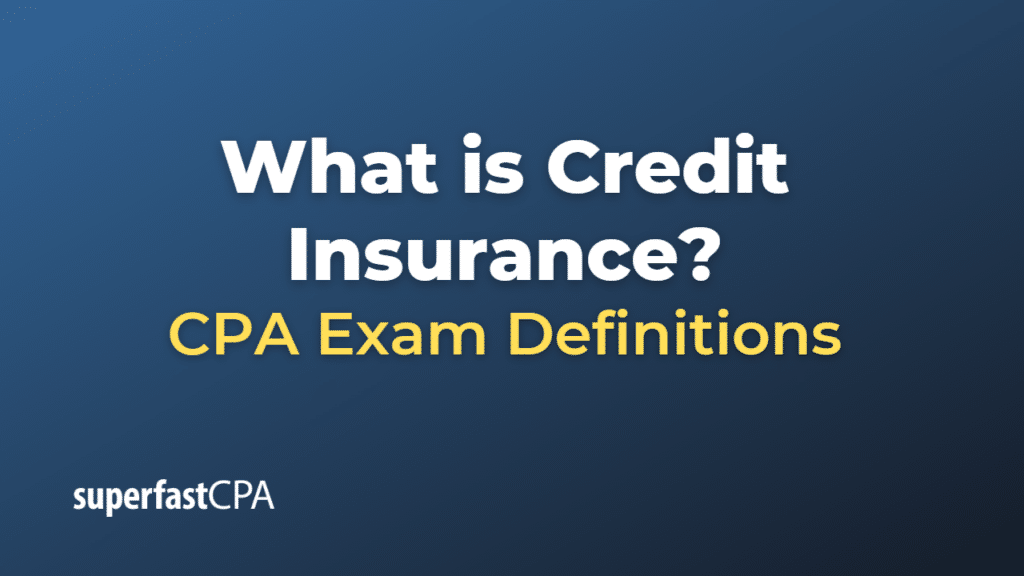Credit Insurance
Credit insurance is a type of insurance policy that protects the policyholder against losses from non-payment of a commercial trade debt. It’s usually taken out by businesses that offer goods or services on credit to their customers, although it can also be used in other contexts, such as personal loans.
If the debtor defaults on payment (due to insolvency or bankruptcy, for instance), or payment is delayed beyond a specified period, the insurer will pay out a claim to the policyholder. The aim of credit insurance is to help businesses manage their credit risk, secure their trade receivables, and ensure the continuity of their operations.
There are several types of credit insurance, including:
- Trade Credit Insurance: This covers manufacturers, traders, and service providers against the risk of non-payment by their buyers.
- Export Credit Insurance: This protects exporters from the risk of non-payment by foreign buyers.
- Consumer Credit Insurance: This covers individuals’ payment of loans if the borrower is unable to pay due to unemployment, disability, death, or other covered reasons.
It’s important to note that, as with all insurance policies, credit insurance usually comes with specific conditions and exclusions, and may only cover a certain percentage of the outstanding debt. Therefore, businesses should carefully consider the cost and benefits of credit insurance in the context of their overall risk management strategy.
Example of Credit Insurance
Let’s take the example of a company named “Wholesale Tech Inc.” that sells electronic goods to retailers on credit terms.
Wholesale Tech Inc. has a significant amount of its capital tied up in trade receivables (money owed by its customers). There’s always a risk that one or more of its customers might default on their payment due to bankruptcy or other financial difficulties. This could severely affect Wholesale Tech Inc.’s cash flow and potentially even jeopardize its business operations.
To mitigate this risk, Wholesale Tech Inc. decides to take out a trade credit insurance policy. The policy covers 90% of the value of its trade receivables. The insurance company charges an annual premium for this policy, which is a small percentage of the total insured receivables.
A few months later, one of Wholesale Tech Inc.’s major customers, a large retailer, files for bankruptcy and is unable to pay its outstanding invoices totaling $500,000. Thanks to the trade credit insurance, Wholesale Tech Inc. can file a claim with their insurance company. The insurer, after assessing the claim, pays Wholesale Tech Inc. 90% of the outstanding debt, i.e., $450,000.
This insurance payout helps to cushion the financial impact on Wholesale Tech Inc., allowing it to maintain its cash flow and continue its business operations with minimal disruption. However, Wholesale Tech still incurs a loss of $50,000 (the 10% of the outstanding debt not covered by the insurance), plus the cost of the insurance premium. Nonetheless, without the trade credit insurance, the loss could have been much more significant.
This example illustrates how credit insurance can protect a company against the risk of non-payment by its customers. However, it’s important to remember that credit insurance does not eliminate credit risk entirely; it merely reduces the potential loss.












